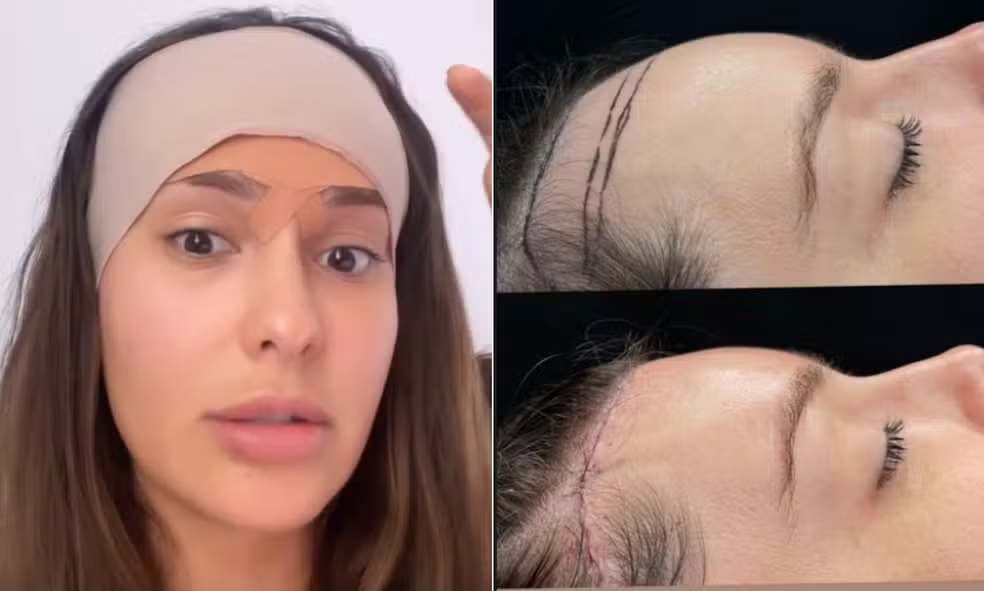Video-Assisted Facial Plastic Surgery: A Minimally Invasive Path to Natural Rejuvenation
In recent years, advances in facial plastic surgery have brought techniques that are less invasive and deliver increasingly natural results. One of the most innovative approaches is video-assisted surgery, also known as endoscopic surgery, which allows facial rejuvenation without the traditional incisions in front of the ear.
In this article, you will learn what video-assisted facial surgery is, who it is for, its benefits, and how long the results last.
What is video-assisted surgery?
Video-assisted surgery has been used in plastic surgery for more than 20 years. The procedure is performed through small incisions, where special instruments and a micro-camera are inserted.
The optical system magnifies the surgical field, allowing the surgeon to perform precise adjustments with minimal trauma to the tissues.
With this technique, it is possible to:
- Lift the eyebrows
- Reposition the mid-face (cheekbones)
- Improve sagging around the outer corners of the eyes
These areas are often difficult to treat with other methods, which makes the endoscopic facelift an irreplaceable option for selected patients.
Which areas can be treated?
The most common indications for video-assisted surgery include:
- Forehead and eyebrows → corrects drooping brows and softens expression lines.
- Mid-face region → repositions sagging cheeks and restores youthful contour.
- Outer eye corners → improves the “tired look” that is challenging to treat otherwise.
⚠️ Note: This technique does not address the neck area. In such cases, it can be combined with other procedures like a neck lift or chin liposuction.
Who is a good candidate?
Video-assisted facial surgery is best for younger patients under 50 years old who:
- Have mild to moderate sagging.
- Do not yet require skin removal.
- Prefer a longer-lasting option compared to repeated non-surgical treatments.
In short, it is ideal for patients who want natural rejuvenation without visible scars and who are not yet candidates for more aggressive lifts such as the Deep Plane Facelift.
Combination with other techniques
Facial aging is not caused only by sagging skin. Over time, we also experience:
- Fat volume loss
- Decline in skin quality
For this reason, surgeons often combine video-assisted surgery with:
- Fat grafting (lipofilling) → restores youthful volume.
- Skin treatments → such as laser resurfacing or collagen biostimulators.
This combination ensures a more complete and natural rejuvenation, tailoring the treatment to each patient’s unique needs.
How long do the results last?
Patients often ask: “How long will the results last?”
- Video-assisted surgery results are long-lasting (on average 5 to 7 years).
- However, they do not last as long as those from a Deep Plane Facelift, which involves removing excess skin.
- For patients under 50, the endoscopic approach is usually the best choice, avoiding unnecessary scars and providing a fresher, more natural appearance.
The importance of proper indication
A key principle in medicine is choosing the right technique for the right patient.
For example:
A 43-year-old woman may request a Deep Plane Facelift, but if her skin is still firm and her sagging is mild, the video-assisted approach is safer and more appropriate. Performing an aggressive lift too early may leave scars and unwanted effects that are difficult—or even impossible—to reverse.
As experienced surgeons often emphasize: Complications can be managed, but the wrong indication is much harder to correct.
Benefits of video-assisted facial surgery
Some of the main advantages include:
- Minimal incisions and almost invisible scars
- Faster and less painful recovery
- Natural and long-lasting results
- High precision in correcting sagging
- Ideal for patients under 50
Final considerations
facial plastic surgery is a modern, safe, and effective alternative for patients seeking rejuvenation with minimal scarring and downtime.
While it does not replace traditional facelifts for advanced aging, it is an excellent option for younger patients. When combined with fat grafting and skin quality treatments, the results are even more impressive and natural.
The most important step is to consult a board-certified plastic surgeon who specializes in endoscopic techniques, ensuring the best results and patient safety.






